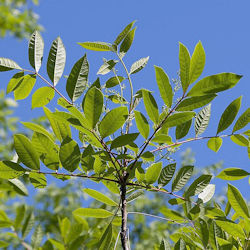Poison Sumac
In the United States, poison sumac grows in standing water in peat bogs in the Northeast and Midwest and in swampy areas in parts of the Southeast. Each leaf has clusters of seven to 13 smooth-edged leaflets. The plants can grow up to 15 feet tall. The leaves are orange in spring, green in summer, and red, orange, or yellow in fall. There may be clumps of pale yellow or cream-colored berries.
Poisonous Plant Exposure Symptoms and Solutions
Signs and symptoms of poison ivy, oak, and sumac include:
- itching
- redness
- burning sensation
- swelling
- blisters
- rash (may take up to 10 days to heal).
Possible solutions and controls for poison ivy, oak, and sumac include:
- Wear long-sleeved shirts and long pants, tucked into boots. Wear cloth or leather gloves.
- Apply barrier creams to exposed skin.
- Educate workers on the identification of poison ivy, oak, and sumac plants.
- Educate workers on signs and symptoms of contact with poisonous ivy, oak, and sumac.
- Keep rubbing alcohol accessible. It removes the oily resin up to 30 minutes after exposure.
Knowledge Check Choose the best answer for the question.
1-10. How can you decrease the effects of poison sumac exposure?
You forgot to answer the question!

